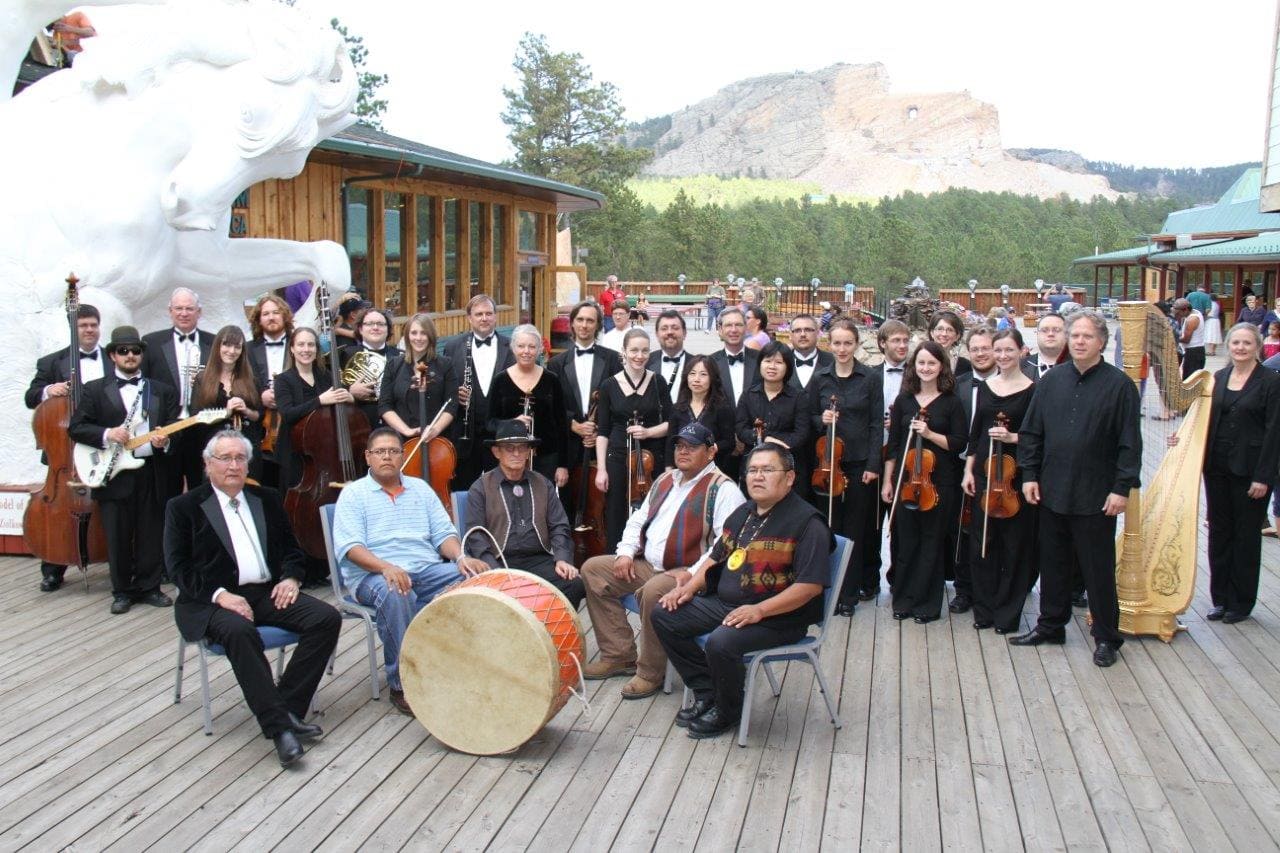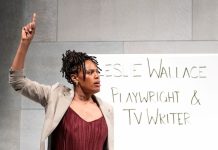If this summer’s Baltimore Symphony Orchestra labor dispute underscored that remonstrating over the sustainability of American symphony orchestras is pointless if we don’t clarify whether they should serve regional needs or reiterate Eurocentrism – something I opined about during the lead up to the musicians’ lockout – then an upcoming music festival will offer classical music lovers an opportunity for introspection.

The Lakota Music Project will be in residence at the National Cathedral from October 16-21, as part of the Post Classical Ensemble’s Native American Festival. This is the first time the project has toured beyond South Dakota. Directed by Delta David Gier, a former New York Philharmonic assistant conductor who now leads the South Dakota Symphony Orchestra, the project grew organically from Gier’s desire to make music that was meaningful to South Dakotans.
“An orchestra should serve its unique community uniquely,” Gier said in an interview.
Soon after being hired in 2004 as the SDSO’s music director, Gier spent two years speaking with various Lakota and Dakota Nation elders and others from across the state, seeking input on how to combine the music of non-indigenous American symphony orchestras with the musical traditions of the tribes. Gier said he was initially met with suspicion, but that over the past 15 years, the Lakota Music Project has evolved into a collaboration between orchestral musicians and Lakota drummers, singers, and cedar flutists with tangible impact.
The Project regularly performs in gymnasiums and other public spaces, primarily on the reservations, playing music composed specifically for the ensemble. Performances are always followed by a meal prepared by locals. As the musicians and audience eat together, conversation inevitably turns to how the music is weaving these two distinct cultures together.
“Here in our homeland, we never thought something like this is possible. The Lakota do not listen to symphony music. We opened their eyes to what is possible,” Emmanuel Black Bear (Lakota), keeper of the drum for the Creekside Singers of the Lakota Pine Ridge Reservation, said in an interview.

“I have been part of this since the very first meeting. It has brought a lot of joy. It is in people’s faces. I don’t hear any negative responses,” Black Bear said. “It shows that if we can work together through music, we can do it in other ways, too.”
Black Bear will be one of several featured speakers during the festival’s opening night event on October 16th at 7:30 p.m. at the National Cathedral. Among the discussions will be the historic role of Native American music in classical composition, including in the controversial Indianist Movement of the early 20th century.
The Indianist Movement was “an attempt to use Native American music and lore to fashion a musical signature for all Americans,” according to Post Classical Ensemble co-founder and American classical music historian, Joseph Horowitz. He believes the movement could have played a major role in the development of a uniquely American sound in classical music, except that America’s mostly white European society at the time wasn’t interested in hearing music based on the lives of people of color, despite what Horowitz called the “astonishingly great” works that came out of the Indianist Movement, as well as a community of African American composers like William Grant Still and others of that era.
“We never established an American canon, and it’s the reason we’re so marginal. We didn’t bother to develop it and we still don’t bother to curate it, but our musical past is far more interesting than we realize,” Horowitz, the author of Classical Music in America: A History of Its Rise and Fall, said in an interview.
Instead, our orchestral repertoire remains largely Eurocentric with occasional smatterings of mid-20th-century American composers like Bernstein and Copland, according to Horowitz.
Now that the cultures of people of color in this country are regarded more seriously, a collective exploration of their music is truncated by fears of cultural appropriation, leaving the Indianist Movement both stigmatized and unknown, according to Horowitz.

“Indianism bears a stigma but nobody knows what [the music] sounds like,” Horowitz said. “You don’t have to like it, but you should know it exists.”
The festival will introduce American classical music audiences to the work of the Indianist Movement’s leader, Arthur Farwell, a Midwestern composer whose output spanned the first half of the 20th century. The Dakota String Quartet will perform Farwell’s Hako String Quartet when the festival culminates at the National Cathedral’s Bethlehem Chapel on Monday, October 21st at 7:30 pm. The performance will also mark the world premiere recording of the work.
“People will be startled by the music of Arthur Farwell,” Horowitz said. “He is one of the greatest contributors to American classical music. I think a lot of people will come to Farwell as a result of that recording.”
A discussion about the Native American musical elements Farwell incorporated in his works and other topics will follow the performance, Horowitz said. Also slated are several works composed expressly for the Lakota Music Project, including Guide Me, a song written by Black Bear to honor his late mother, and arranged for string quartet and voice by Jerod Impichchaachaaha’ Tate (Chickasaw), the SDSO’s composer-in-residence.
“This is not cultural imperialism,” said Gier. “We are playing music from both traditions and discussing the role music plays in our respective cultures. Then we have music created especially for us to play together,” he said.
If, as I believe, the core mission of American orchestras is to act primarily as cultural institutions rather than entertainment outfits, the SDSO’s Lakota Music Project could well serve as a model. You can take in some or all of the festival and decide for yourself.
In addition to the National Cathedral festival performances, Black Bear and Akipa will appear along with other members of the Lakota Music Project in concert and in conversations at other venues around the city, including on Saturday, October 19th at 2:00 p.m., at the Smithsonian Museum of the American Indian. For more on that performance, visit the museum’s website.
The Lakota Music Project of the South Dakota Symphony, in partnership with the PostClassical Ensemble, performs at locations throughout Washington, DC from October 16-21, 2019. For more information, go online.




